There have been, and continue to be, women who played key roles in establishing national parks or who are honored by parks that bear their name or were influenced by their work, or had positions with the National Park Service. How many do you know?
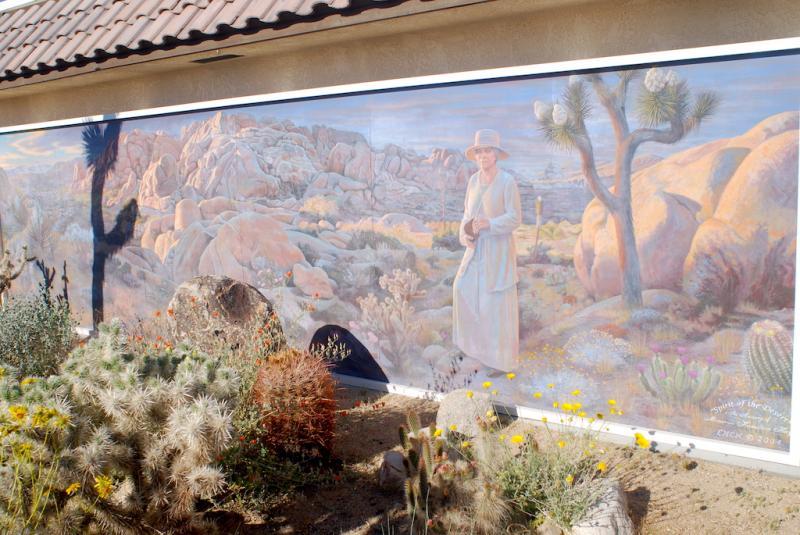
Minerva Hamilton Hoyt is memorialized in a mural at the visitor center in Joshua Tree National Park/Kurt Repanshek file
Minerva Hamilton Hoyt
Hoyt was not one to take "no" for an answer. She grew up in Mississippi during the Civil War Reconstruction Era but moved to Southern California after marrying and fell in love with the desert. It was during trips into the desert to collect plants for her gardens that she not only came to appreciate the desert vegetation, but saw the careless destruction of the land by those who viewed the Joshua trees and other cacti as worthless.
Not only did Mrs. Hoyt stage exhibitions of desert vegetation in places such as Boston, New York, and London in the late 1920s, but she founded the International Deserts Conservation League with the intention of preserving desertscapes. The attention she garnered through these efforts led Frederick Law Olmstead Jr., the noted landscape architect, to appoint her to a commission to recommend new state parks for California.
It was Mrs. Hoyt's belief that the National Park Service was best suited to preserve large swaths of desert that spurred her campaign to have the Joshua Tree area set aside as part of the National Park System. Her work led to her introduction to President Franklin Roosevelt and a friendship with his secretary of the Interior, Harold Ickes.
When the Park Service proposed to recommend a 138,000-acre park, Mrs. Hoyt, who wanted one in the range of 1 million acres, complained to Secretary Ickes and succeeded in having Interior officials propose a larger area for protection.
In 1936 President Franklin D. Roosevelt set aside 825,340 acres of the landscape as a national monument, but 14 years later Congress transferred 289,500 acres out of the monument and back into the public domain for mining and grazing. In 1994, however, the California Desert Protection Act returned that land back to the monument and redesignated Joshua Tree as a national park. Then, between 1999 and 2000, another 25,000 acres of land within the park's boundaries that had been privately owned were added to the park as part of the purchase by the federal government and the Wildland Conservancy of more than 600,000 acres from the Catellus Corporation.
Maggie Lena Walker
The Maggie L. Walker National Historic Site pays homage to Walker.
From 1899 until her death in 1934, Civil Rights icon Maggie Lena Walker ran the Independent Order of St. Luke, a Black fraternal organization she founded. Under Walker’s visionary leadership, the IOSL grew from a dwindling mutual aid society to a thriving and competitive insurance empire, totaling 100,000 policy-holders nationwide.
Recognizing that the economic empowerment of Black women was central to uplifting the African American race as a whole, Walker steered the IOSL into job-creating enterprises including a Black-owned department store, a weekly newspaper, and famously, the St. Luke Penny Savings Bank - the first bank ever chartered and run by an African American woman. Walker oversaw these operations from her office in Richmond’s St. Luke Hall.
Belmont-Paul Women’s Equality National Monument
Back in 2016 a monument to the history of women's equality in the United States was added to the National Park System. The Belmont-Paul Women’s Equality National Monument in Washington, D.C. The site had been known as the Sewall-Belmont House and Museum, which has been emblematic of the mission to advance women’s rights throughout the 20th century.
Today her home serves as the national historic site, a tribute to her enduring legacy of vision, courage, and determination.
“The Belmont-Paul Women’s Equality National Monument will honor and forever remind us of the risk, the work and the dedication of those who gathered in this house to fight for women’s equality. We must never forget their hard-fought struggle for the right to vote and equal rights for women under the law,” then-Interior Secretary Sally Jewell said at the time.
Located on Capitol Hill, the Sewall-Belmont House – as the property has been known since its designation as a National Historic Landmark in 1974 – contains a museum, library, and extensive collections and archives associated with the National Woman’s Party (NWP), its founder Alice Paul, and the mission to advance women's suffrage and equal rights throughout the 20th century. From this house, Ms. Paul rewrote the Equal Rights Amendment, which became known as the “Alice Paul Amendment,” and led the fight for its passage in Congress. Paul and the NWP advocated tirelessly for women’s political, social, and economic equality, not just in the United States, but internationally.
Rosie the Riveter WWII Home Front National Historical Park
In addition to fighting battles overseas, countless Americans — many of them women — spent the years during World War II doing their part on the home front. Established in 2000 and located in Richmond, California, Rosie the Riveter WWII Home Front National Historical Park tells the story of the challenges workers faced at home. The labor shortage created by the war opened the door for women and minorities to enter the workforce, which proved to be a crucial turning point in the struggle for equal rights.-- National Park Foundation
Clara Barton National Historic Site
An accomplished nurse, teacher, and humanitarian, Clara Barton founded the American Red Cross in 1881. Clara Barton National Historic Site preserves Barton's historic home and the 9 acres that surround it in Glen Echo, Maryland, where visitors can tour the residence and learn about Barton’s remarkable life and meaningful work. When it was established in 1974, Clara Barton National Historic Site was the first national historic site dedicated to a woman. -- National Park Foundation
Eleanor Roosevelt National Historic Site
The stone cottage and surrounding 181 acres known as Eleanor Roosevelt National Historic Site was the home of Eleanor Roosevelt after the 1945 death of her husband, President Franklin D. Roosevelt. She called the home Val-Kill, which roughly translates to “waterfall-stream” in Dutch. The exhibits and refurbished rooms of this Hyde Park, New York, cottage shed light on Roosevelt's many accomplishments, which included bringing widespread attention to racial and women's rights issues, and largely redefining the role of the First Lady. -- National Park Foundation
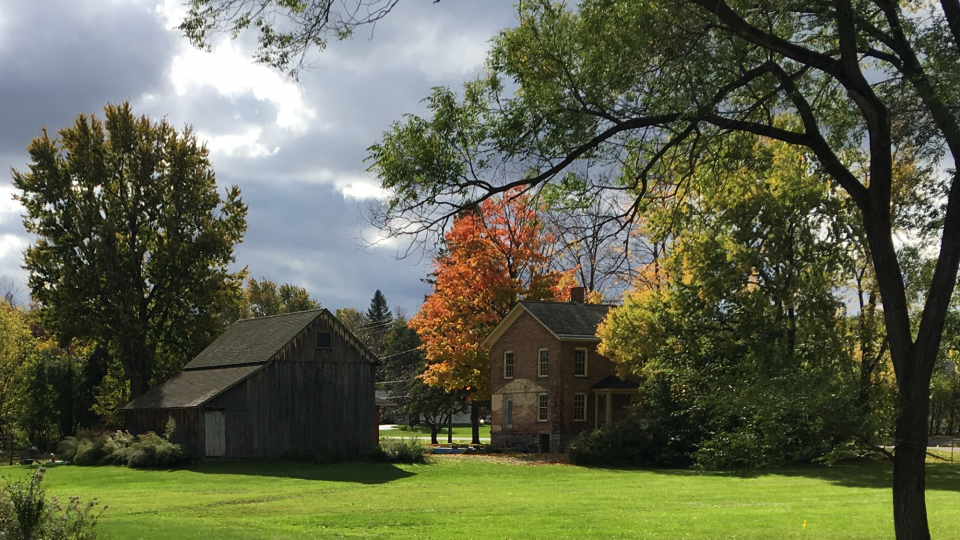
Harriet Tubman residence and barn at Harriet Tubman National Historical Park/NPS
Harriet Tubman National Historical Park
Harriet Tubman was known as the “Moses of her People” for leading more than 300 people out of slavery and her extraordinary work with abolitionist causes. Today you can visit the site where Tubman lived and worshiped, caring for family members and other people who were formerly enslaved and seeking safe haven in the North. Harriet Tubman National Historical Park explores these later years of Tubman’s life, where she helped establish schools for people who were formerly enslaved, advocated for equality and suffrage for African American women, and established the Harriet Tubman Home for the Aged.--National Park Foundation
Fran P. Mainella
Fran P. Mainella was the first women to be confirmed as National Park Service director. She was nominated by President George W. Bush on June 4, 2001, to the position, and on July 18 she became the 16th director. Mainella came to the National Park Service with more than 30 years of experience in the park management and recreation field.
Ynes Mexia
Ynes Mexia was born in 1870 in Washington, D.C. She lost her first husband soon after their marriage and divorced her second husband after he financially ruined her family ranch. Mexia spent almost 30 years living in Mexico, but with all the tremendous changes in her life she suffered from mental health challenges. She traveled to San Francisco to seek treatment and to make a new life for herself. She started her time in San Francisco as a social worker but soon discovered her passion for environmentalism.
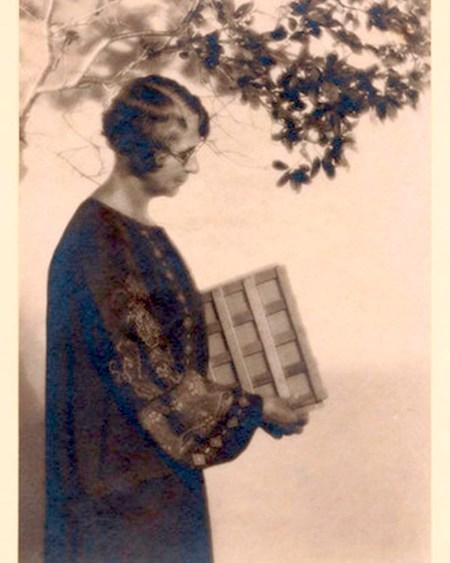
A black and white photo of Ynes Mexia with her plant dryer under a tree University of California Berkley
Ynes Mexia joined the environmental movement. She was an early member of the Sierra Club and Save the Redwoods League. She joined these clubs and went on many excursions through California and to the redwood forests. Mexia became incredibly active in efforts to save the redwood trees. She remarked after hearing of the clear cutting of redwood forests across Northern California, "I have been much distressed to hear cutting has been going on in Montgomery Grove, I am heartily in sympathy of any effort to save these trees." She spoke passionately about the preservation of these landscapes and was at the forefront of the national park conservation movement.
Ynes Mexia traveled all over the Americas, and was the first botanist to collect plants in what is now Denali National Park. She often traveled solo or with a few Indigenous guides. She advocated for Indigenous rights in the areas she collected, valuing their knowledge, perspective, and right to the land. She would spend months in the field, riding horseback and sleeping outdoors, something that shocked many because she was a woman doing this work. -- National Park Service
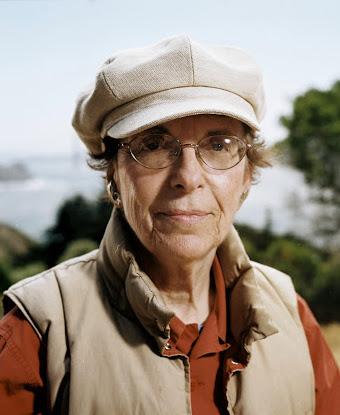
Amy Meyer/People For A Golden Gate National Recreation Area
Meyer is a Bay Area conservationist who helped forge local and national support to preserve the land at the Golden Gate as a national park in the 1970s.Living in San Francisco’s Richmond District at the time, Amy Meyer was “looking for a small community project” in 1970 when she heard about a neighborhood effort to stop the development of a small parcel near her home. In January 1971, Meyer took action. She helped form a coalition of park advocates, People for a Golden Gate National Recreation Area, becoming co-chair of the group alongside wilderness advocate, five-time Sierra Club President Ed Wayburn. -- National Park Service
"The people out here since the Gold Rush have said, 'This is a gorgeous place and we’ve got to save it.' San Francisco began protecting its beaches in the 1870s. Muir Woods became a National Monument in 1907. Mount Tam was protected beginning in the 1920s. There’s a tradition, an attitude about this beautiful place that we’ve got to keep it whole. But there’s also a saying that goes, 'All of our gains are temporary, all of our losses are permanent.' So we have to keep watching out and working all the time to protect these natural and cultural treasures." - Amy Meyer
Marjory Stoneman Douglas
For many, the Everglades in southern Florida was nothing more than a vast swamp that, once drained, could be something much more “useful.” But Marjory Stoneman Douglas recognized the serious, consequential damage caused by changing the Everglades’ natural systems, especially the natural water flow. She was vocal in her disapproval and distaste for the destruction of the scenic wetlands. She knew that restricting natural water flow results in very little support for vital algae growth, a lack of oxygen dispersal necessary for many aquatic animals to thrive, and a decrease in open water feeding areas for wildlife.
Marjory Stoneman Douglas was born in Minneapolis, Minnesota, in 1890. After graduating from Wellesley College with honors, she was a journalist for the Miami Herald and dedicated herself to conversations about feminism, racial justice, and conservation. Douglas was particularly devoted to the Florida Everglades, which she affectionately called “her river.” She fiercely defended it long before scientists recognized the negative effects of agricultural and real estate development on the intricate ecosystem.
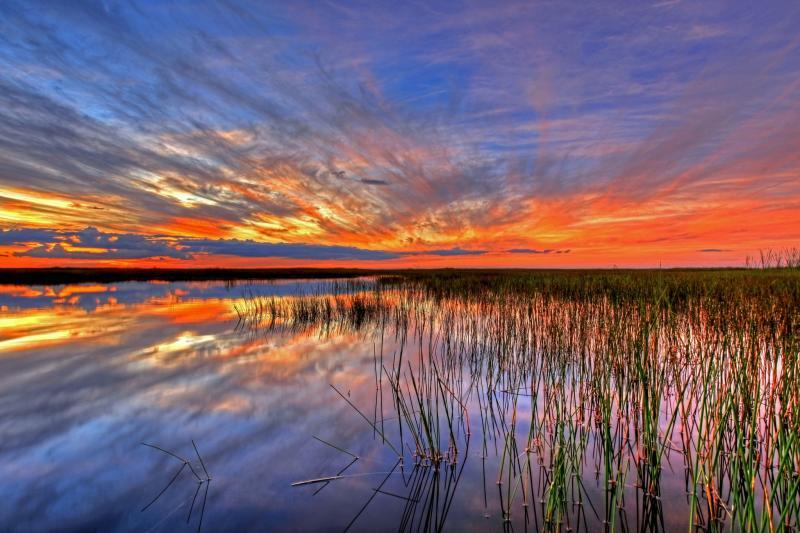
Everglades National Park/NPS
In 1947, Douglas wrote The Everglades: River of Grass. Her book described the immense importance and beauty of the natural ecosystems of south Florida and the need for protection from human interference. That same year, Everglades National Park was established. Douglas and her passionate, unwavering advocacy for Everglades conservation played a significant role in establishing the park. She continued to represent the park as the founder and head of the Friends of the Everglades, an organization dedicated to preserving, protecting, and restoring Marjorie Stoneman Douglas’s river.-- National Park Service

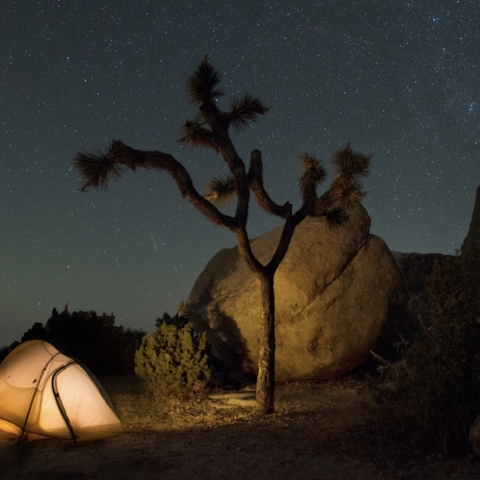








Comments
You forgot Linda Brown from Brown v. Board of Ed. NHS
Lorraine Mintzmeyer First woman regional Director.
And how about Rosalie Edge, who helped save Olympic, as well as a part of Yosemite, among other places...
I would like to add Dorothy Buell, who was instrumental in establishing Indiana Dunes NL/NP. The park's visitor center is named for her.